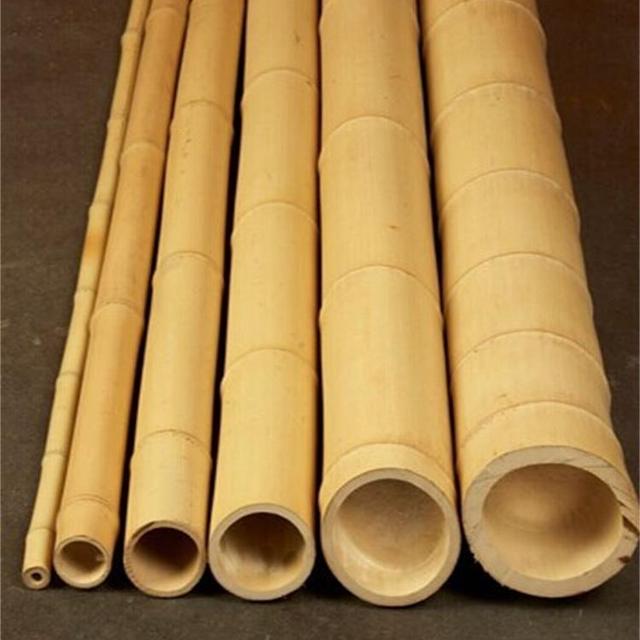How to Protect Young Saplings with Bamboo Stakes for Trees
Protecting young saplings is a vital step in ensuring they grow into healthy, robust trees. Without proper support, newly planted saplings can bend, break, or suffer wind damage. One highly effective and eco-friendly solution is to use bamboo stakes for trees. Bamboo stakes help guide and stabilize the trunk, allowing roots to establish securely in the soil. In this article, we’ll explore why bamboo stakes are an excellent choice, along with a step-by-step method to protect your new saplings so they can thrive for years to come.

Why Use Bamboo Stakes for Trees?
Bamboo stakes stand out as a sustainable, durable, and versatile option for supporting young trees. While wooden stakes, metal rods, or plastic supports can also work, bamboo has several unique benefits:
- Eco-Friendly Material: Bamboo is one of the fastest-growing plants on Earth, making it an incredibly renewable resource. Unlike hardwood stakes that take decades to replenish, bamboo can re-grow within a few years.
- Lightweight and Flexible: Bamboo’s lightweight nature makes it easier to handle and transport. Its slight flexibility also helps trees adapt to wind and weather conditions, reducing the risk of trunk snapping.
- Natural Aesthetic: Bamboo blends seamlessly into garden landscapes, giving a more natural look compared to synthetic options.
- Durability: Despite its light weight, bamboo is extremely strong. Quality bamboo stakes can support saplings of various sizes, from small ornamental plants to more substantial young trees.
Sustainability experts often promote bamboo as a preferable choice in eco-conscious gardening. By selecting bamboo stakes for trees, you’re making a decision that not only benefits your saplings but also the environment.
H2: Step-by-Step Guide to Protecting Young Saplings with Bamboo Stakes
Supporting your sapling is straightforward. Below is a step-by-step guide covering everything from preparation to proper staking techniques.
Gather Your Materials
Before you begin, collect the necessary tools and equipment:
- Bamboo Stakes: Select stakes that are at least one foot taller than the sapling. The thickness can vary, but ensure it’s sturdy enough to handle strong winds.
- Ties or Strips: Use tree ties, soft cloth strips, or even rubber tubing. Avoid thin wire or anything that can cut into the bark.
- Hammer or Mallet: Helps drive the stakes firmly into the ground.
- Measuring Tape: Useful for ensuring the stakes are placed at the correct distance from the trunk.
Choosing the right size is crucial. If the stake is too short, it won’t adequately support the upper portion of the sapling. A stake that’s too tall can limit the natural movement of the trunk. Aim to keep the top of the stake just below the lowest branch for best results.
Preparing the Planting Site
The quality of the soil and planting site can significantly influence a sapling’s ability to thrive, even with sturdy bamboo stakes in place. Consider the following points:
- Soil Assessment: Test the soil pH to ensure it meets the requirements of your tree species. Most ornamental trees prefer slightly acidic to neutral soil (pH 6.0–7.0).
- Drainage Check: Ensure the location has proper drainage. Standing water weakens root systems and can lead to root rot.
- Nutrient Availability: Mix in compost or organic matter if the soil is poor. According to the Arbor Day Foundation, a well-amended soil bed can improve the sapling’s chance of establishing a robust root system.
Place the sapling in its designated spot, making sure the root ball is covered by soil up to the trunk flare (where the trunk starts to widen). Pat down the soil to eliminate air pockets.
Installing the Bamboo Stakes
Once your sapling is planted and the soil is firm, you can install the bamboo stakes:
- Determine Stake Placement: For smaller saplings, one stake may suffice. For larger or more delicate trees, use two to three stakes positioned evenly around the trunk.
- Drive Stakes into the Ground: Use a hammer or mallet to insert the stake about 12–18 inches into the soil. Make sure you’re placing the stakes a few inches away from the root ball to avoid damaging the young roots.
- Check Alignment: The stakes should be oriented so they gently brace the sapling against the prevailing wind direction. This ensures maximum stability without restricting natural trunk movement.
Remember: the goal is to provide support while still allowing slight swaying. This “give” encourages stronger trunk development over time.
Tying and Securing the Sapling
Proper tying techniques can make all the difference in preventing bark damage and promoting healthy growth. Follow these tips:
- Choose Soft, Flexible Ties: Opt for materials that won’t cut into the bark, such as rubber ties, cloth strips, or specially designed tree ties.
- Use a Figure-Eight Knot: Wrap the tie around the stake, cross it over in a figure-eight pattern, and then wrap it around the sapling. This prevents the bark from rubbing against the stake.
- Maintain Space Between Stake and Trunk: A slight gap helps ensure good airflow and prevents the trunk from rubbing or scarring. Keep the tie snug but not overly tight.
- Tie at the Right Height: Tie the sapling at a point that supports the trunk without holding it too rigidly. For many species, tying at about two-thirds of the sapling’s height is ideal.
Maintenance and Ongoing Care
Installing bamboo stakes is only the first part of a successful tree support strategy. Ongoing care is equally important:
- Regular Inspections: Check your stakes and ties every few weeks—especially after storms. Make sure the ties are secure but not digging into the bark.
- Loosen or Remove Ties as Needed: As the sapling grows, expand or move the ties to accommodate the thickening trunk. Ties that are too tight can girdle the tree, restricting nutrient flow.
- Monitor Stake Stability: Over time, stakes can loosen in the soil. Hammer them back in or adjust their position to maintain proper support.
- Remove Stakes at the Right Time: Most saplings can stand on their own within one to two years, depending on the species and local conditions. Prolonged staking can weaken the trunk, so remove the stakes once the tree has developed sufficient stability.
- Keep an Eye on Overall Health: Watch for pests, fungus, or other diseases. Healthy, well-cared-for saplings are more likely to outgrow minor setbacks.
Conclusion
Bamboo stakes for trees offer an excellent combination of sustainability, strength, and convenience when it comes to protecting young saplings. By selecting the right stakes, preparing the planting site, and mastering correct tying techniques, you’ll give your new trees the best possible start. Early support not only reduces the risk of damage from wind or accidents, but also encourages proper root development and upright growth.
Now that you know how to protect young saplings with bamboo stakes, it’s time to put these steps into practice. Have you tried staking your trees with bamboo before? Share your experiences, tips, or questions in the comments below. And if you found this guide helpful, feel free to pass it along to fellow gardeners and tree enthusiasts!

